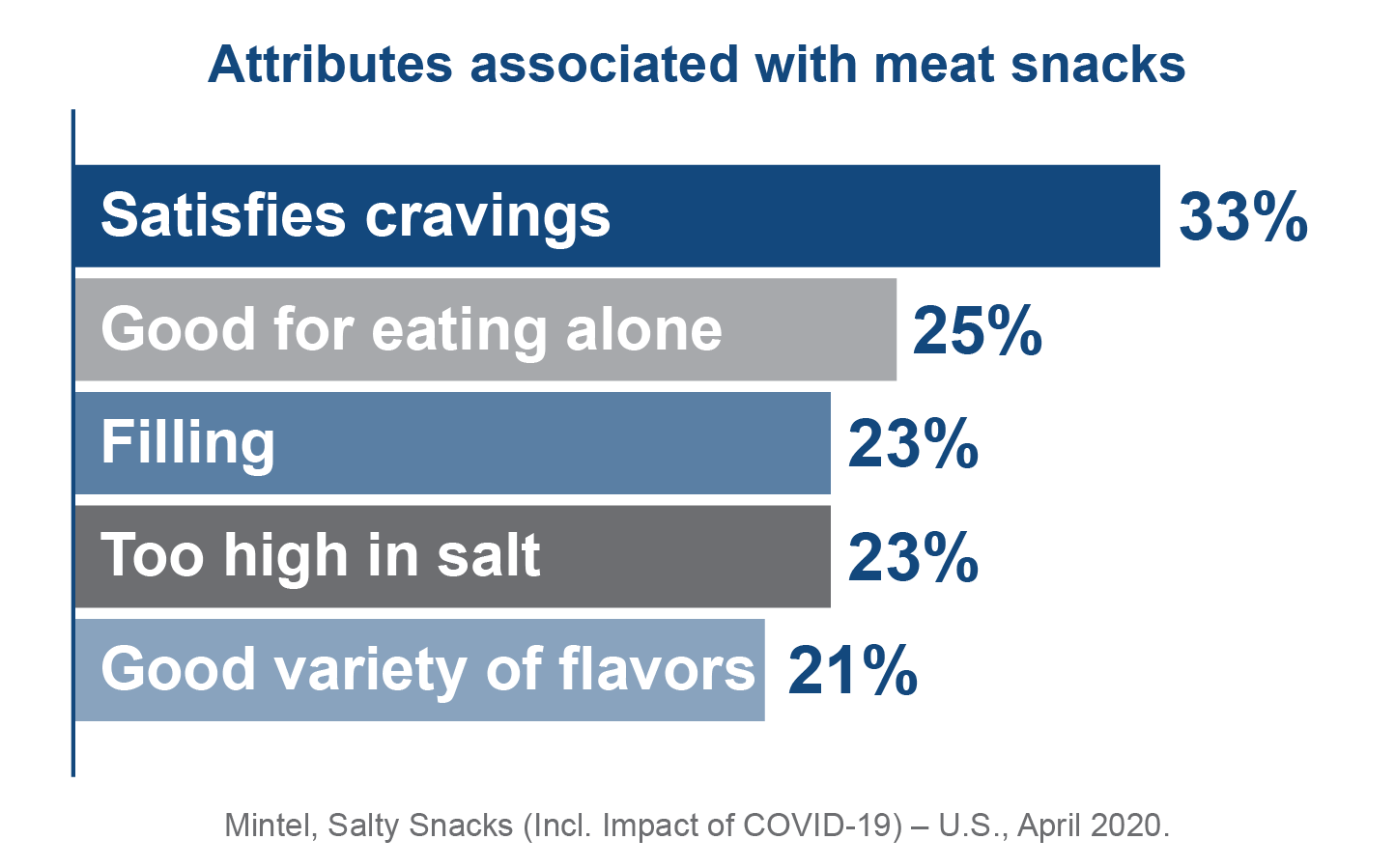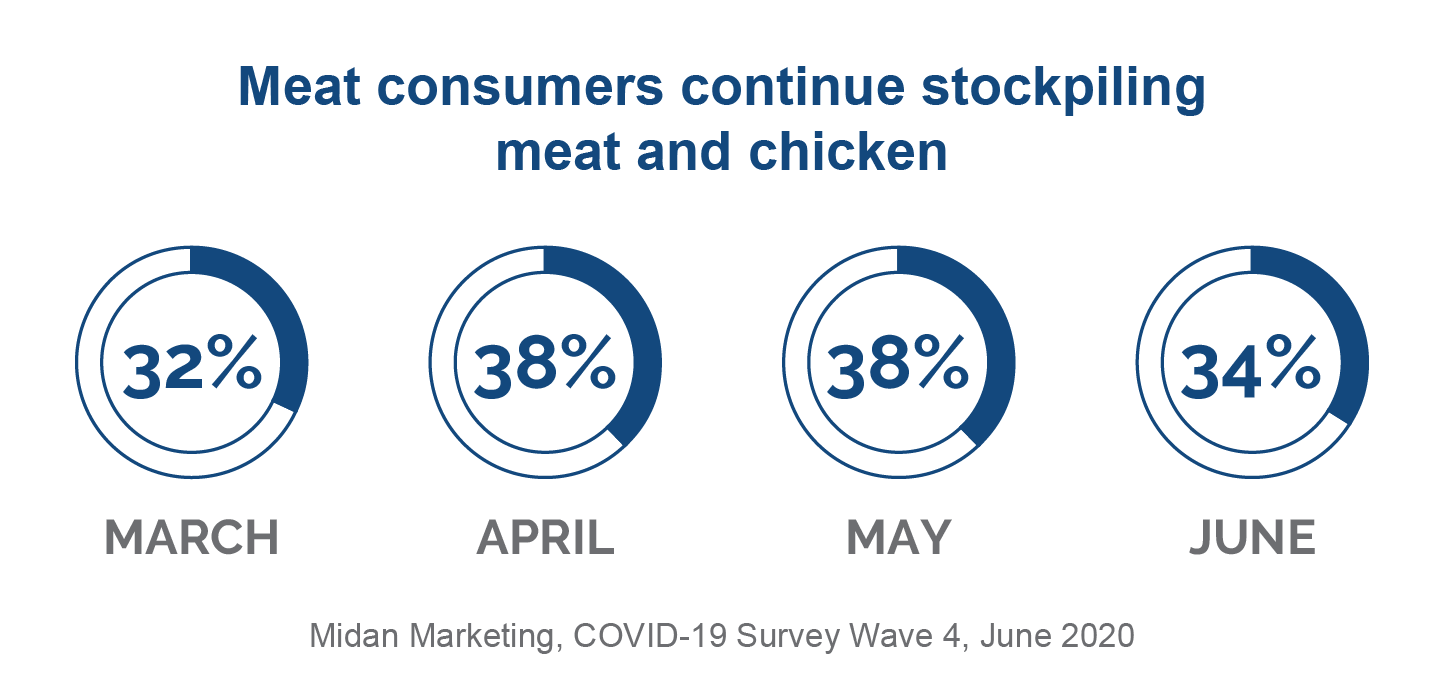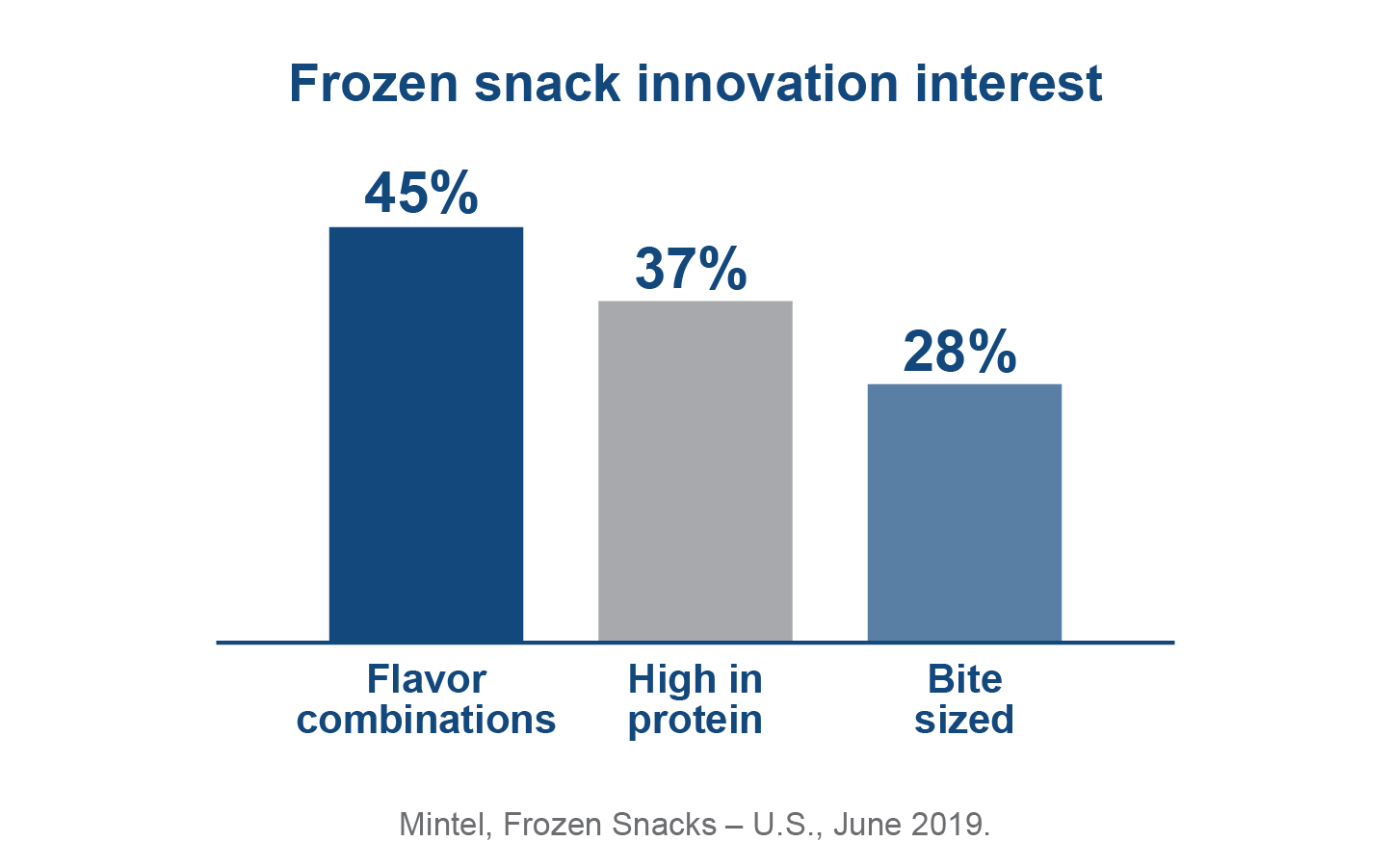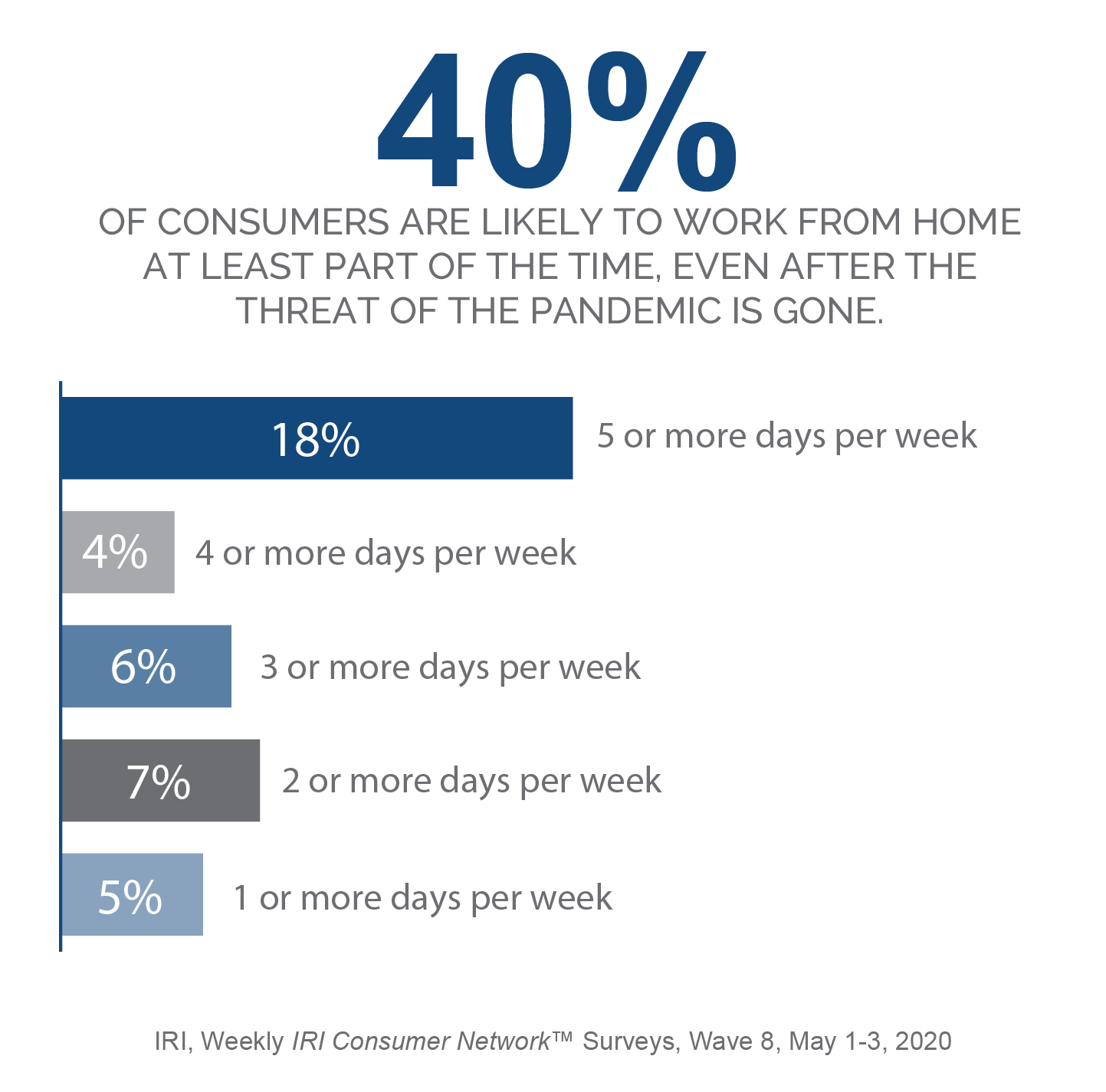When it comes to meat snacks like beef jerky and protein snack packs, the implications are clear – consumers simply aren’t reaching for quick and on-the-go items as often as they did pre-COVID.
“The jerky and protein snacks categories underperformed general food categories due to pandemic related changes in consumer behavior,” explained Erkin Peksoz, IRI consultant. “Some of these changes were likely social distancing induced – lower foot traffic, pantry-loading and changes in food consumption location.”
IRI point-of-sale syndicated data shows that during the COVID period (March 1, 2020, through June 28, 2020*), jerky sales dollars have increased 5.3%, which normally would be a strong increase. However, the snack food aisle as a whole saw an 8.6% sales dollars increase, and the general food department saw an increase of a staggering 21.5% during the same time period.1

Beef Jerky
When it comes to consumers’ choice of salty snacks, beef jerky falls in the middle of what consumers are reaching for. In January, about 35% of surveyed shoppers had purchased meat snacks for their household, compared to 54% for cheese-flavored snacks, the highest performing category.2
Pre-COVID, shoppers reaching for jerky said they do so because the snack satisfies cravings, is filling and comes in a good variety of flavors.2 While all of these attributes still apply during the pandemic shopping period, a new factor came into play as well – size.
“The driver behind jerky’s modest COVID period growth was larger sized units,” Peksoz said. “Within the top 20 SKUs, eight fell in the ‘larger unit size’ category and all grew more than 20% in dollar sales.”
All of the jerky products that saw greater than 20% dollar sales growth during the COVID period were containers of 8 oz and larger.1 This falls directly in line with the stockpiling behavior that was rampant at the beginning of the pandemic and has continued throughout. Midan’s June COVID-19 research shows that 34% of shoppers are still stockpiling meat and chicken products. This is down only 4% from its peak in April and May.3
Another major driver for the jerky category growth for both pre-COVID and COVID periods was challenger brands, according to Peksoz. Old Trapper, Cattleman’s Cut and No Man’s Land each grew more than 20% in dollar sales during both time periods.1 This can likely be attributed to larger pack sizes and that these brands are typically available at larger format retailers like Walmart Supercenters and warehouse club stores including Costco, stores which are designed for shopping in bulk.

Protein Snack Packs
Another category that falls into the realm of meat snacks is refrigerated packs that include a combination of meats, cheeses and crackers. While this category is dominated by the children’s Lunchables brand, it also includes Hillshire Snacking Plates, P3 and others which can be popular protein-dense snacks for all ages.
“As less daily on-the-go or school lunches were packed, protein lunch snacks took a big hit,” explained Peksoz. “The category’s 4.7% pre-COVID annual dollar sales growth is a sharp contrast with the 9.3% decline experienced during COVID weeks.”
Frozen Snacks
Unlike the snack food aisle, the freezer section has been a popular destination throughout the recent weeks, an effect of consumers’ stockpiling behaviors. According to the IRI CPG Demand Index™, the frozen snacks category has been a top growth category throughout the pandemic. Frozen snacks have only routinely trailed fresh seafood and frozen meat, poultry and seafood categories in growth. For the week ending 6/28/2020, frozen snacks dollar sales are up 24% versus YAG.4
“Our new snack bites are a fun, flavorful new option in the frozen food aisle,” said Eric Esch, SVP at BUBBA Foods. “The bite-sized snacks have a crispy coating and are filled with the same premium beef our customers love. We also have a cheesy chicken jalapeno flavor for snackers looking for a bigger pop of flavor.”

Takeaways
As interest in the snack foods category wavered versus what we’re seeing in other categories, it is important to consider how to continue putting meat in front of our customers throughout the day. The trend toward bulk sizing was already in play before COVID, so it’s fair to assume it will continue post-pandemic.
How can we innovate new products or packaging that play into this? Party trays and combo packs are two of the few successful items in the Lunchables category right now.1 This shows that customers will still reach for pre-sliced and easy-to-eat meats and cheeses, but they don’t prefer them in individual packages at this time. As a retailer, focus on larger pack sizes now while continuing to monitor sales as consumers settle into new purchasing routines.
This fall’s return to school may affect these numbers, and some of the bigger lifestyle changes that COVID-19 has brought with it may cause a permanent disruption in these categories. While children may be returning to school, 40% of consumers are likely to work from home at least part of the time, even after the threat of the pandemic is gone.6 If parents are spending more time at home, the increase in from-scratch cooking is likely to continue.
Midan plans to keep a pulse on these snacking trends to revisit later, once it’s more clear which eating habits will change once school is back in session.

1 IRI, MULO, 17 weeks ending 6/28/20.
2 Mintel, Salty Snacks (Incl. Impact of COVID-19) – U.S., April 2020.
3 Midan Marketing, COVID-19 Survey Wave 4, June 2020
4 IRI, Total Store View, 6/28/2020 vs YAG (accessed 7/9/20)
5 Mintel, Frozen Snacks – U.S., June 2019.
6 IRI, Weekly IRI Consumer Network™ Surveys, Wave 8, May 1-3, 2020
This content originally appeared in The Shelby Report.
Get additional COVID-19 Insights here
